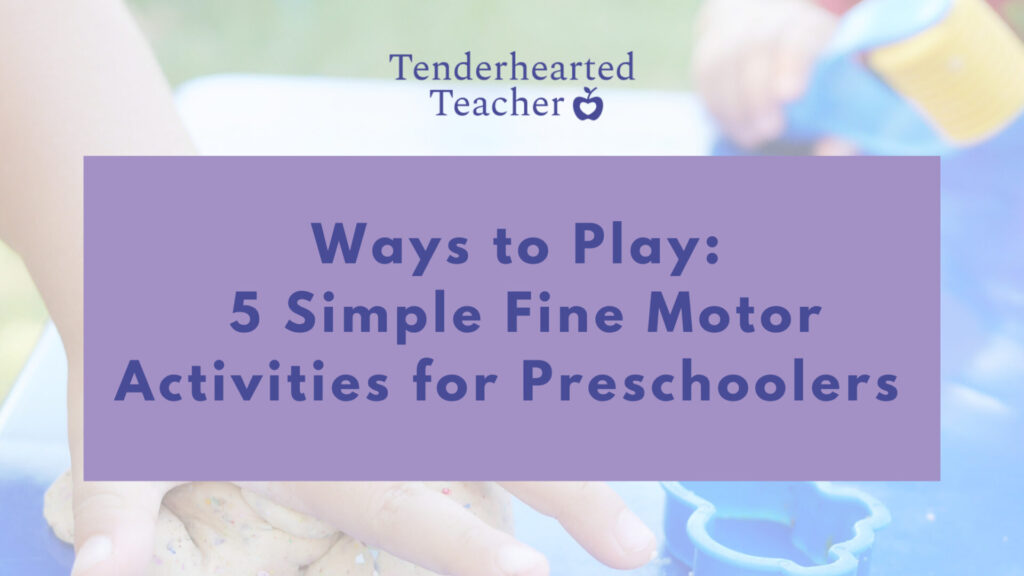
“What can I do at home to help my child learn to write?” This is a question I hear at the beginning of just about every school year. And it’s no surprise because it’s an important one! Many parents and caregivers think the solution is handwriting worksheets or workbooks. But, the real answer is multi-faceted. Not only do children need opportunities to practice drawing, writing, and tracing with various materials and instruments, but they also need to strengthen the muscles in their hands/wrists with non-writing exercises! Today, I’ll share 5 simple fine motor activities for preschoolers that can help with writing (and other important skills too!) Read on to find out more.
Please note: This post may contain affiliate links. As an Amazon Associate I earn from qualifying purchases. Therefore, if you buy something through these links I will receive a small commission at no extra cost to you. Thank you for your support.
First Things First
There are a few things I want to discuss, quickly, before we get into fine motor development and how it ties into writing. First, it’s important for parents and caregivers to have some background knowledge of emergent writing and its stages. (You can read about them here.) This helps you to determine age-appropriate activities for your little one. Second, let’s throw out the notion that preschoolers need to be sitting down with worksheets all day! There are simple activities–that are way more fun and engaging– that encourage important pre-writing skills that have nothing to do with pencils, markers, crayons, etc.
What is Fine Motor Development?
There’s a lot of focus on the gross motor developmental milestones in early life– think rolling, crawling, standing, pulling, walking, etc. We know that to develop those physical skills our kiddos need to strengthen the large muscles in their bodies. I’m sure we’ve all heard about the benefits of tummy time, right? We don’t expect a child to walk without learning to crawl first. Well, the same goes for fine motor development. We can’t expect our children to write (and do it well) without the muscles needed to grasp a pencil or crayon first.
According to Understood.org, “Fine motor skills are the ability to make movements using the small muscles in our hands and wrists. We rely on these skills to do key tasks in school, at work, and in everyday life.”
Think about it this way…as adults, we often take fine motor development for granted. We generally don’t think about how much eye-hand coordination goes into grasping objects, feeding ourselves, getting dressed (zipping, buttoning our clothing,) combing our hair, etc. But, children certainly know how challenging these tasks can be when muscles are immature or underdeveloped. That’s why it’s incredibly important to actively provide our children with opportunities to enhance their fine motor skills. This gradual refinement is critical for our children’s independence and self-care in addition to their writing, drawing, and cutting skills.
5 Simple Fine Motor Activities For Preschoolers
To be perfectly honest there are COUNTLESS activities (toys and games too) that promote fine motor development. But, today, I am going to share some of my absolute favorites because they are simple, free (or cheap,) and take very little prep!
1. Manipulating Playdough
Who doesn’t love opening a brand-new container of playdough? I know I sure do (I also love the smell!) It’s a wonderful sensory experience that allows our children to create in an open-ended way. Rolling, cutting, and molding playdough are great exercises for young children. Here is a great find that will keep your kiddos and their tiny hands busy!
- CREATIVITY PLUS CONVENIENCE: Play-Doh toys have made kids activities even easier for the grownups with the Fun Tub
- REUSABLE STORAGE CONTAINER: Keep the Play-Doh tools and colors in one place with the tub and resealable lid
- 12 ANIMAL AND SHAPE CUTTERS: Make 3 classic shapes and 9 fun animals like dogs, cats, fish, alligators, and more
- 7 CLASSIC PLAY-DOH ACCESSORIES: Customize the creations with 3 pretend fruit stampers, extruder with rail, roller, and knife
- INCLUDES 5 PLAY-DOH COLORS: 2-ounce cans of blue, orange, teal, purple, and red are perfect for kids arts and crafts time
Also, please check out my emotion playdough mats in my Etsy shop. These can help teach important social-emotional skills while practicing fine motor development too. They are available in English and bilingual (English and Spanish) versions.
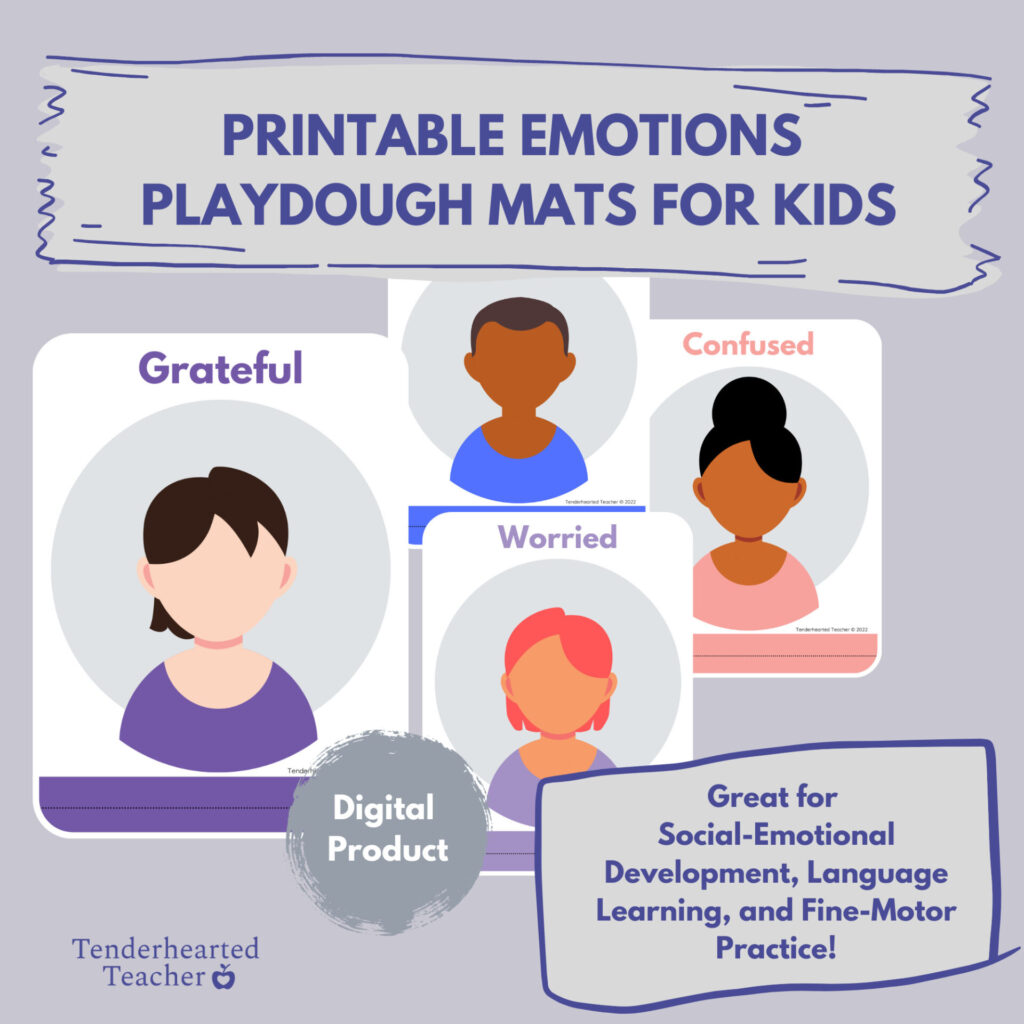
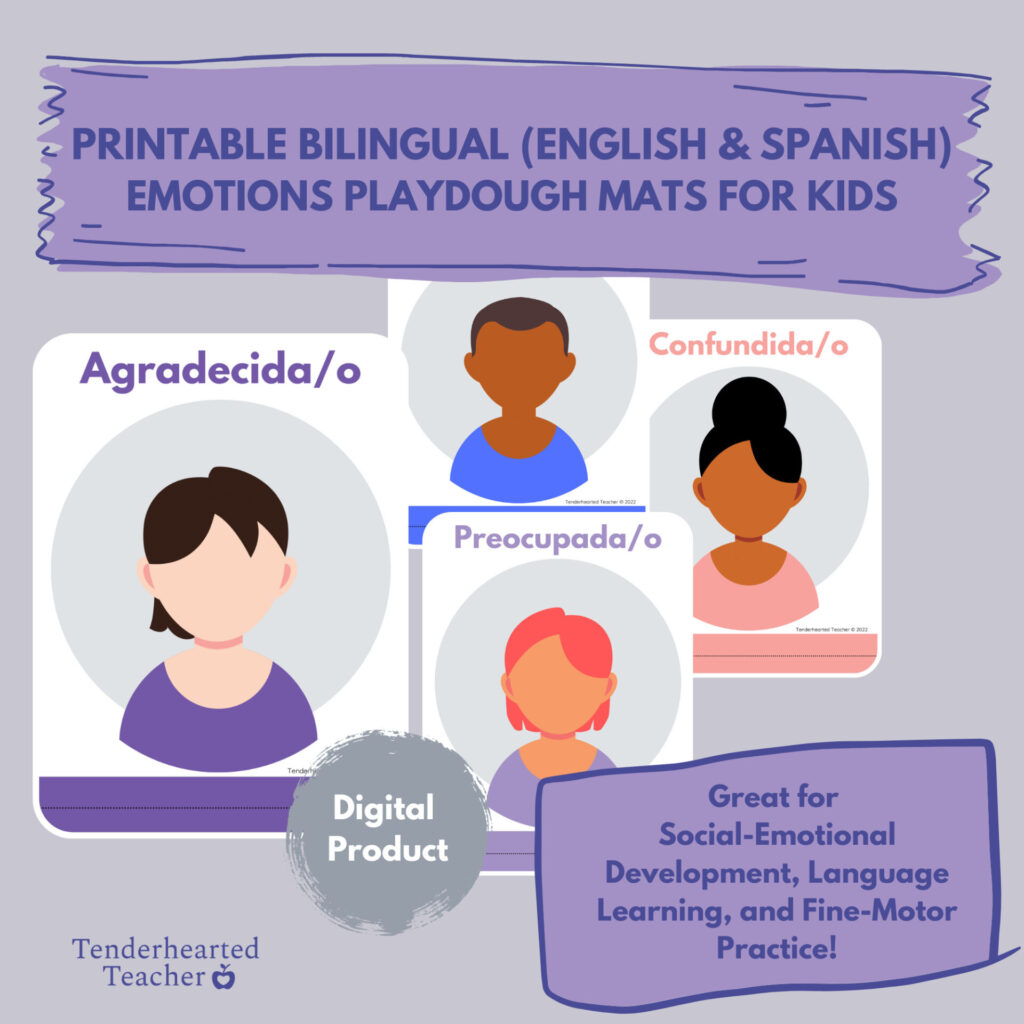
2. Grabbing Small Objects with Tweezers or Tongs
Your child’s grasp is another important factor when it comes to fine motor development. In fact, babies generally start using a pincer grasp between 9 and 12 months. What to Expect notes, “Although it sounds like something a lobster might do with its claws, the pincer grasp simply means the ability to grab a small object with the thumb and index finger. And this growing dexterity sets the stage for all sorts of skills.” Using tongs, tweezers, and grabbers to pick up small toys or objects helps to refine your child’s grasp as they grow and mature.
3. Tearing and Rolling Different Types of Paper
This might not seem like much of an activity, but kids love to tear paper! I recommend using a thinner variety (like tissue paper) to introduce an activity like this. Have your child tear it into small bits and then use their fingers to roll it into tiny balls. You can even have them dip it into some glue and put it on paper for an extension activity.

4. Peeling and Placing Stickers
Children really need to concentrate on what they’re doing to activate the muscles in their hands so that they can peel and place stickers. It’s also a good way to build frustration tolerance because using stickers is not always easy! I like to use large, thick foam stickers when kids first start out practicing this and then I work my way down to smaller stickers that are a bit more challenging to manipulate.
5. Opening and Closing Jars and Containers
In the past, I’ve talked about how children love to play with bottles, containers, and boxes (sometimes even more than their own toys!) So use that to your advantage. Empty kitchen containers and jars and let your child practice opening, closing, and matching the lids. Read more about how to get the most out of your household items here.
Now To Wrap Things Up
These five fine motor activities are simple. But, they go a long way in helping your children develop skills that will benefit them throughout their entire lives. Here are some other great activities for promoting physical development too: cooking, gardening, and outdoor play.
In addition, if you have concerns about your child’s developmental milestones, it’s important to speak to your child’s pediatrician and/or teacher. They may suggest getting an occupational therapy evaluation. You can learn more about that process here.
Now talk to me! If you have comments or suggestions for fine motor activities for preschoolers, please share them below!
SAVE TO PINTEREST
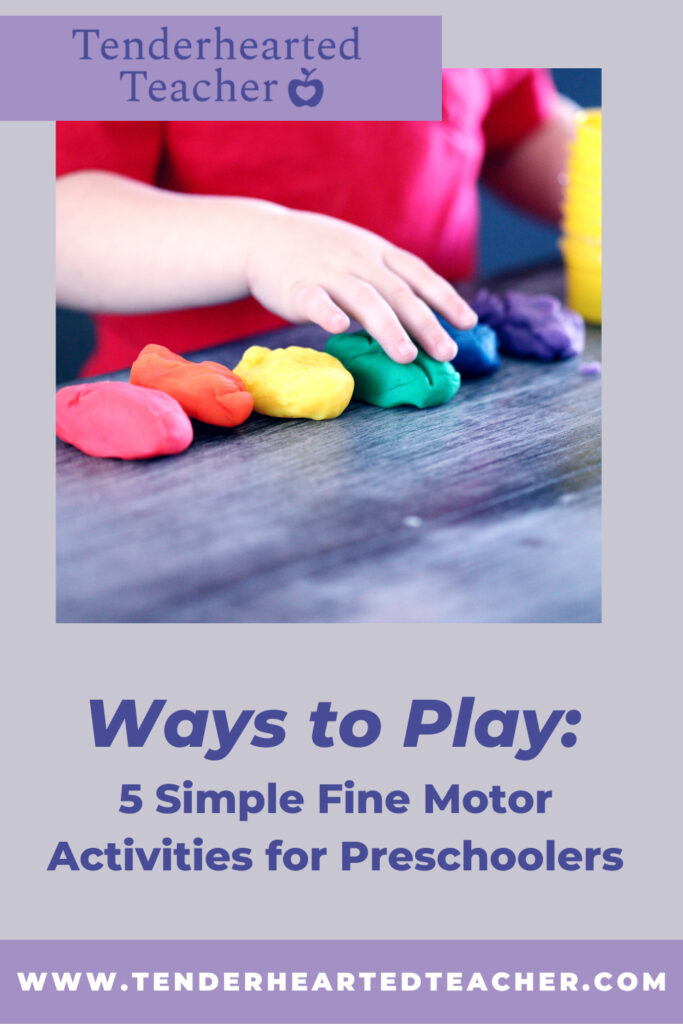

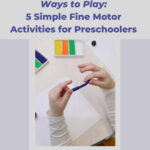
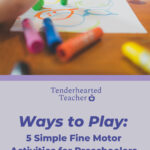
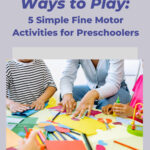
these are some great ideas, thank you
It’s so cool how much skills build off each other. Great ideas!